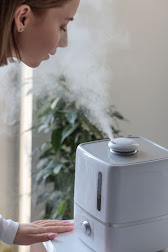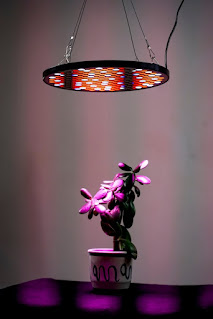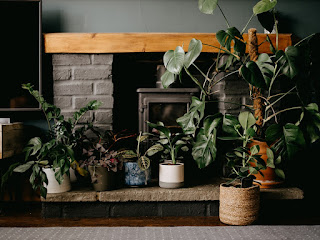Houseplants face a particular set of
problems in winter that can often take a serious toll on them. This does not
have to be the case, however, if you keep an eye on certain key factors that I
have dubbed “WALT”. This acronym stands for Water, Air, Light and Temperature.
Let’s look at each one in turn:
Water – According to this article, overwatering is the most common problem houseplants face in winter (although, arguably, this could be the same problem year-round). The fact is that plants need less water in winter as they enter a slow growth phase or go dormant entirely. In most cases, you should let the plant dry out thoroughly before watering. The dry air of winter will cause surface soil to dry out faster than other times of the year, so if you use your finger to check soil moisture be sure to push it in an inch or so. While the surface soil may dry quickly, it takes longer for the whole plant to dry out, so plan your watering with that in mind. One more thing: If you are using tap water and it’s very cold in winter, let it warm up before using. Frigid water is as shocking to a plant as it to us.

Air – The
same dry winter air that brutalizes your skin can be a problem for your houseplants.
When you consider that most homes in winter have a relative humidity between
5-10% and houseplants thrive in 40-50%, the problem is clear. If your plants are losing their leaves, or
they’re yellowing or browning, or they’re wilting and drooping, low humidity
may be the cause. There are many ways to increase the humidity in a house (here are several), and none of them are
complicated or expensive. At the very least, give your plants a good misting as
often as you can (which can especially help when/if you reduce waterings) It
behooves you to keep on top of this issue as many pest insects, like Spider Mites, thrive in low humidity.

Light – There is
one fact about winter that there is no getting around – there is simply less
sun. Not only are the sun’s UV rays less strong, but it also shines for fewer
hours and that sunshine comes in at a lower angle. What this means for your
plants is that they may need to be moved to an area that has southern/ western
exposure (these areas stay sunny the longest), or they may need supplemental
light. But before you invest in lighting you should (if possible) turn plants about
a ¼ way around each time you water so all sides get exposure, make sure all windows
are clean enough to let every ray pass through, and wipe down leaves so they can
soak up every bit of that sun. Most houseplants slow their grow in winter, but
if you notice growth with skinny stems and scraggly-looking leaves your plants are hurting for sun. All
in all, the good news here is that low sunlight will (most likely) not kill a
plant outright; they can adjust, they just won’t flourish.

Temperature – That
warm blast of air you feel when you step inside on a frosty winter day may feel
wonderful to you, but chances are your plants feel differently. Houseplants
just don’t like temperature fluctuations – drafts, hot air vents, a door that
frequently opens to the outside, fireplaces, and radiators are all stressful to
them. Plants are just not built to handle rapid temperature changes. Take a
look around your house and move any plants that may be in a drafty situation.
If these changes disrupt your interior design or feng shui, remember that this
is only a short-term repositioning. If you have your plants positioned properly
and keep your daytime temperatures between 65 °F and 75° and nighttime temperatures
above 50°F, your plants should be fine.
Many of the above problems can be monitored by using one of the two
Active Air meters that
ARBICO Organics carries. The 2-way meter monitors moisture and pH levels, while the 3-way meter checks moisture, light and pH. Please visit our website at
www.arbico-organics for more information on other products that can help your houseplants and more.
Take Care
Submitted by Pam










No comments:
Post a Comment